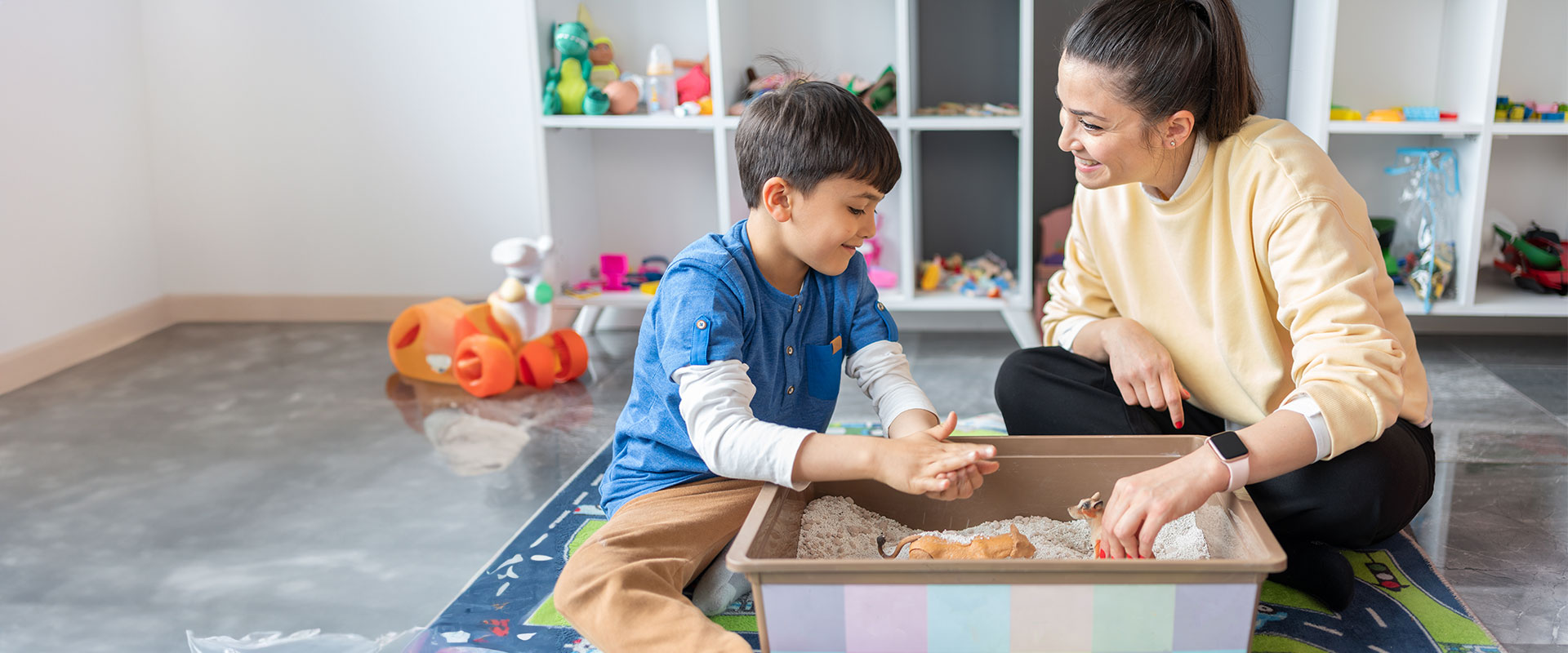Sensory Playtime at Home: Fun Activities for Toddlers & Preschoolers with Autism

Sensory play is a magical world where children explore their senses – touch, sight, sound, smell, and taste – through fun and engaging activities. It's a wonderful way for all toddlers and preschoolers to learn and grow, but for children with autism spectrum disorder (ASD), sensory play can be an especially powerful tool.
Why? Because children with ASD often experience sensory processing difficulties. This means certain sights, sounds, smells, tastes, or touches may overwhelm or excite them. Sensory play can help them better understand and manage these sensory experiences.
So, if you’re looking for ways to further support your child's development through play, this article is for you! In it, we’ve shared some fun and easy sensory activities you can do at home with everyday items.
Understanding Your Little Explorer
Children with ASD often experience sensory processing difficulties. This means certain sights, sounds, smells, tastes, or touches may overwhelm or excite them. The key to creating a positive sensory experience is understanding your child's unique preferences.
Be a detective: Notice what sights, sounds, smells, tastes, or touches seem calming, exciting, or overstimulating for your child. Do they find comfort in water play or become overwhelmed by loud noises? Perhaps there’s a certain shirt that makes them squirm with discomfort or a favourite teddy that they love to rub and hold up to their face.
Watch how they interact: Do they gravitate towards specific textures and materials, or delight in flashing lights and shiny objects? Or maybe these things cause them to cover their eyes and become withdrawn. Perhaps they find repetitive movements like spinning objects soothing or clap their hands and point in excitement.
Share this knowledge with your care team: The more you uncover about your child’s preferences, interactions and behaviours, the more you can share with your network of carers, such as family members, childminders and nursery practitioners. Together, you can tailor your child’s learning experiences and nurture their wellbeing.
Building Your Sensory Toolkit…
Simple Sensations, Big Impact
Touch Time: Create a sensory bin filled with dried beans, rice, or pasta. Add small toys, scoops, and cups for your child to explore the textures with their hands.
Sight Show: Transform your living room (or any suitable room of your choice) into a dazzling light show. You can use flashlights, disco balls, light projectors, or colourful scarves to create a captivating display.
Sound Surprise: Craft a homemade shaker by filling a plastic bottle with rice, beans, and uncooked pasta. Seal the lid and decorate to create a delightful sound maker that your child can rattle and shake.
Smell Sensation: Introduce your child to calming aromatherapy. Use safe, diluted essential oils like lavender, lemongrass or chamomile in a diffuser (with adult supervision, of course!) to create a soothing atmosphere.
Getting Messy and Making Memories
Taste Test (safe for exploration): Offer your child a taste test with different textures like yogurt, jelly, pudding, or applesauce. Let them explore the variety with a spoon or their fingers.
Tactile Play: Set up a shaving cream sensory play station. Cover a waterproof surface with shaving cream and add small toys or plastic letters for scooping and squishing fun.
Movement Magic: Turn playtime into a sensory adventure course! Build an obstacle course with pillows, blankets, and chairs for climbing, crawling, and jumping.
Personalising the Play
Observe and Adapt: Pay close attention to your child's reactions to different textures, sounds, and smells. This will help you to further tailor activities to their unique sensory preferences.
Empower with Choice: Offer your child a few different sensory bins or activities and let them choose what they want to explore, empowering and encouraging a sense of independence.
Learning Through Play: To take your activities to the next level, incorporate counting, colour sorting, role-playing or other learning activities into your sensory play to create a holistic experience.
Bonus Tip: Remember, there are no rules! Get creative and personalise these ideas as much as you like. Add food colouring to shaving cream, create a themed sensory bin for their favourite character or season, or play calming music during water play.
Safety First, Fun Always!
Always supervise your child during sensory play and be sure to choose age-appropriate materials.
With a little creativity, you can transform everyday moments into opportunities for sensory exploration and forge lasting memories. These activities not only benefit your child's development but also create a space for connection and strengthen your bond.





